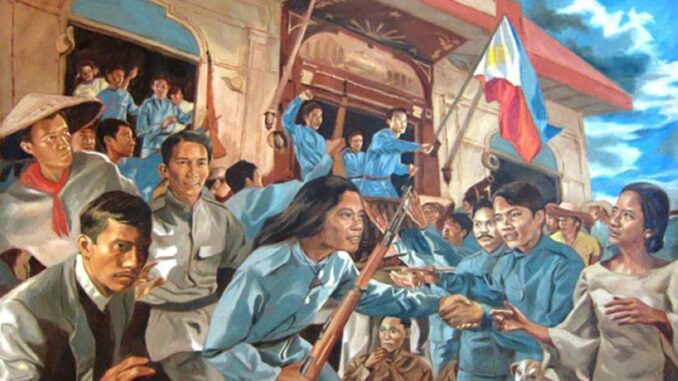
Artists can accomplish a great deal through the medium of painting. Expressing their feelings, communicating ideas, even igniting social change. The possibilities seem endless. A country’s culture, and history can be seen reflected in these works of art.
The Philippines has been home to many gifted and famous artists. Their paintings are unlike those found anywhere else. They can be appreciated on a purely aesthetic level. But on another level, they reveal aspects of Philippine culture and history that have influenced modern life. They become a window into the life and culture of our ancestors. Here we will look at some of the countries greatest artists and their artwork..
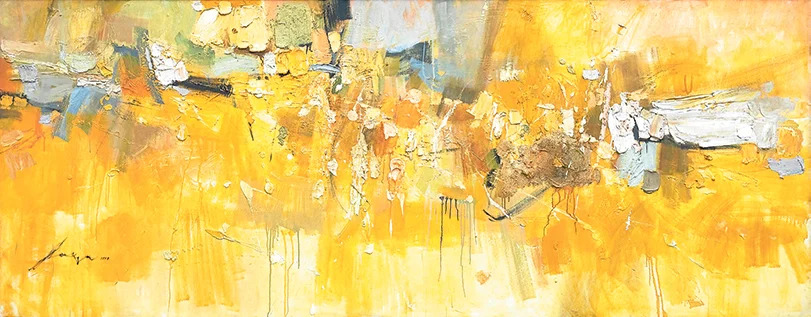

1. “Granadean Arabesque” by Jose Tanig Joya (1958)
The “Granadean Arabesque,” is a staple of the Philippine art world, created by the well-known Filipino painter and Artist Jose Joya. This is an example of horizontal Philippine abstract art on a large scale, standing at 305 cm by 118 cm. It features a variety of yellow tones, sweeping brushstrokes, and an impasto medium made with sand.
Joya was a pioneer in developing modern Filipino paintings and art in the Philippines, and this masterwork exemplifies the breadth and depth of her talent as a mixed-media artist.
Joya was instrumental in the Philippines debut at the world’s longest-running international cultural exhibition, La Biennale di Venezia. This is a prestigious place for visual art and the worldwide avant-garde to showcase their works. In 1964, the Granadean Arabesque was one of the works of Joya on display to represent the country.
Granadean Arabesque is undoubtedly one of the most well-known paintings to come out of the Philippines.
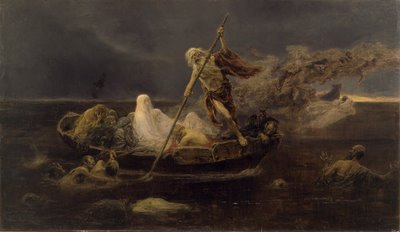

2. “La Laguna Estigia” by Felix Resurreccion Hidalgo (1887)
It is generally agreed that Felix Resurreccion Hidalgo was one of the most significant painters to emerge from the Philippines in the latter half of the 19th century. La Laguna Estigia, often known as The River Styx or just The Styx, is a Greco-Roman piece inspired by Dante Alighieri’s epic poem “Inferno,” written in the 14th century.
The poem “Inferno” is about a voyage through hell, and hell is portrayed in the poem as having nine concentric circles, each of which represents a different level of depravity and wickedness.
The putrid waters of the river Styx serve as the setting for the fifth and last level of Hell, which is referred to as the Circle of Wrath. This artwork by Hidalgo depicts a darker and more cryptic rendition of the poem “Divine Comedy” by Dante Alighieri.
The painting is one half of a pair, the other being titled “La barca de Aqueronte,” and both were created simultaneously. During the National Exhibition of the Philippines in Madrid in 1887, it was awarded the silver medal.
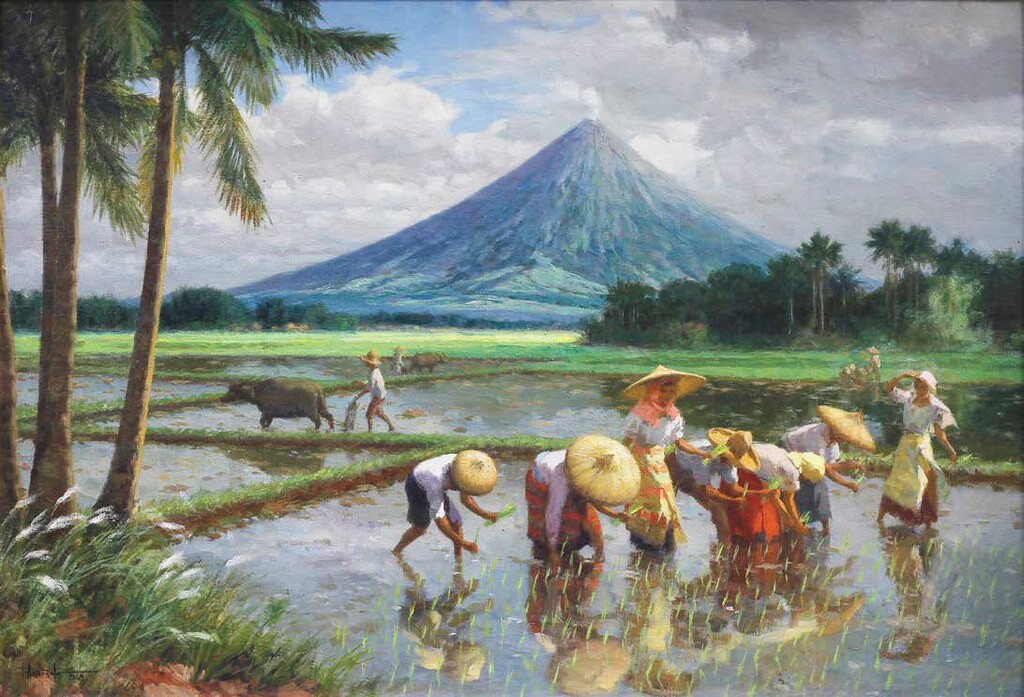

3. “Planting Rice” by Fernando Amorsolo (1949)
The entrance of American colonists sparked a fresh wave of nationalism in Philippine society, which may be seen most clearly in the work of Fernando Amorsolo. The period’s artwork centred on depictions of traditional folk settings as a vehicle for expressing an idealised feeling of nationhood.
Amorsolo presented motifs which portrayed sights common to the Philippines. This included depictions of Filipinos taking part in common hobbies and customs, as well as partaking in work such as farming activities.
In hindsight, some historians have concluded that Amorsolo’s paintings mirrored the people’s yearning to escape from a complicated reality into simplicity. In contrast, others have claimed that his paintings depicted an idealised picture of life during those times.
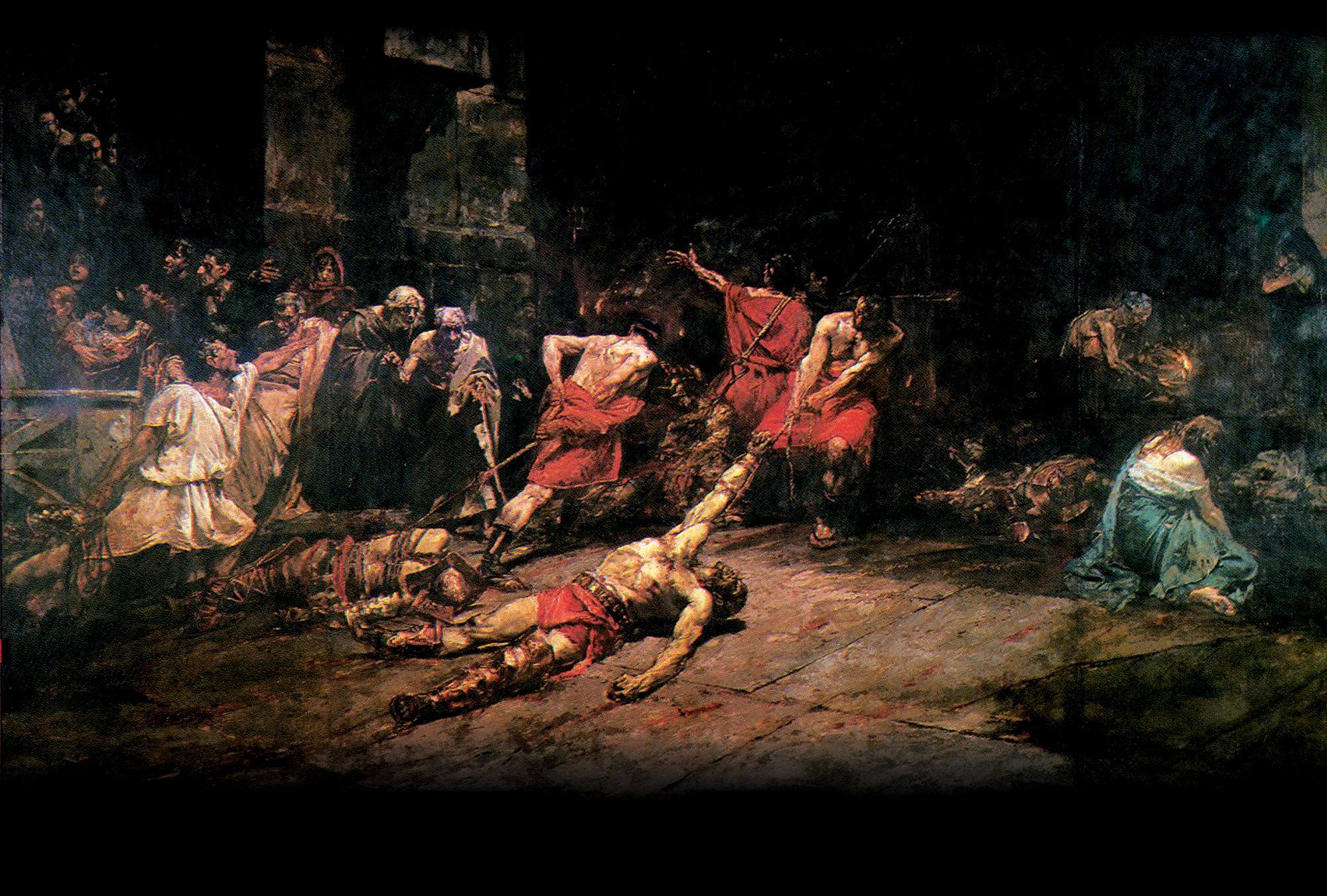

4. “Spoliarium” by Juan Luna (1884)
Juan Luna’s oil on canvas painting Spoliarium offers a glimpse into the history of Rome and the horrific effects of the gladiator bouts it depicts. The painting’s subject matter centres on the realities behind the battles between gladiators.
The picture shows Roman troops dragging dying gladiators away from the arena. The phrase “Spoliarium” is a Latin word that refers to the location of the Roman Colosseum that was used to discard the bodies of slain gladiators.
Luna created a distinction between the two sides of the painting by depicting individuals on the left side who are excitedly awaiting the battles and people on the right side of the painting lamenting the death of a fallen gladiator.
THe gladiators seem somewhat exposed and unheroic. As the painting depicts the men without their uniforms and weapons in a scene of hopelessness.
It is currently on exhibit in the Philippine National Museum of Fine Arts in Manila, Philippines, where it holds the title of the largest painting in the Philippines.
At the Exposición Nacional de Bellas Artes held in Madrid in 1884, Juan Luna’s painting was awarded the first gold medal he had received for his work. The painting is often credited as being the largest painting in the Philippines.
There is no question that Spoliarium is the most well-known painting ever created by a Filipino artist.
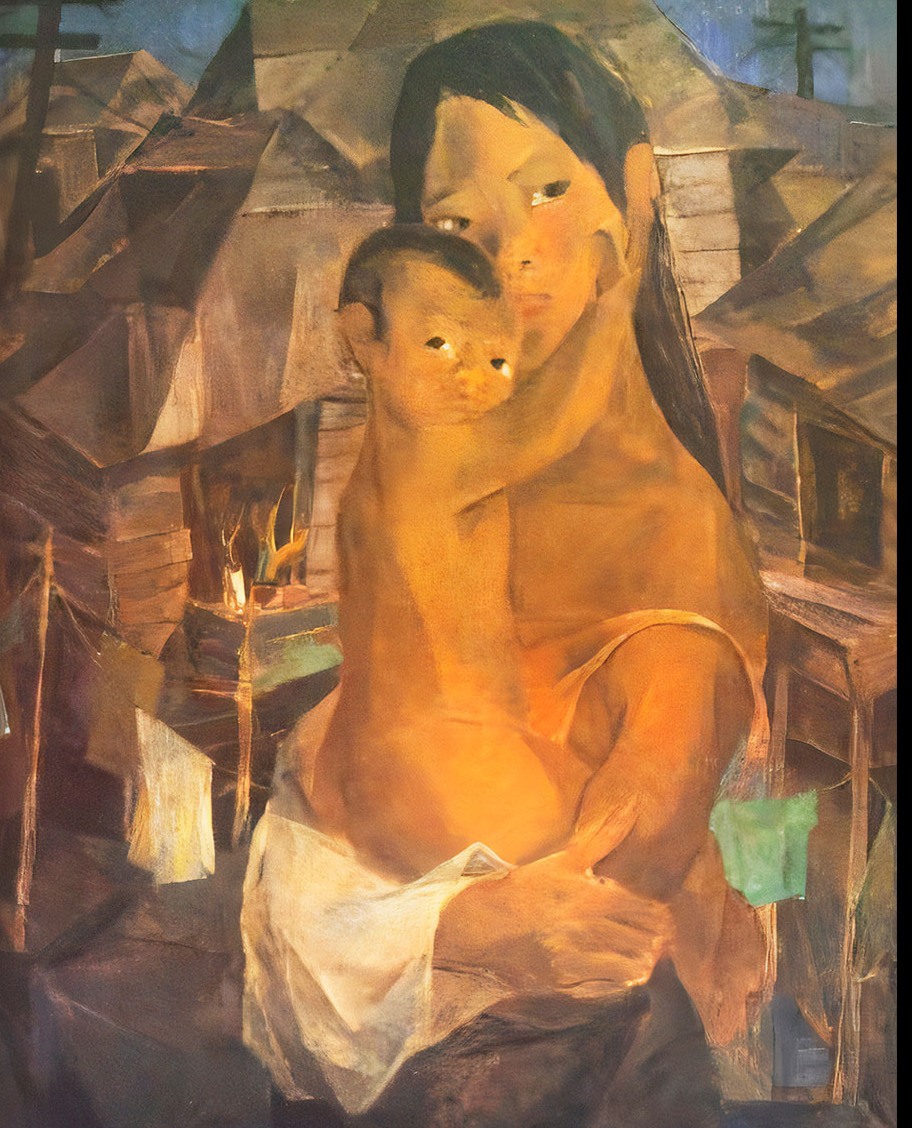

5. “Madonna Of the Slums” by Vicente Manansala (1950)
Vicente Manansala’s masterpiece, “Madonna of the Slums,” was a pivotal work that significantly contributed to developing the Modernist movement in the Philippines.
It focuses on the transition from rural to urban settings. In it, Vicente portrays a mother and her child who recently relocated from the countryside to the city. The story is about the transition from rural to urban settings.
Manansala’s work aimed at enhancing and fostering the national culture, social environment, native identity, and native sensibility. It was noted that his paintings managed to capture both the urban and rural settings inside a single composition.
The painting highlights the uncertainty and anxiety of the time. The Philippines had recently exited the war, and experienced liberation from Japanese occupation. Filipinos were experiencing rampant insecurity in their lives as they moved toward full independence.
The background of this painting demonstrates his method known as “Transparent Cubism,” in which he layers different colours and shapes on top of one another.
Nevertheless, the artwork focuses on the mother cradling her kid to her chest with much affection. The “Madonna of the Slum now resides in The National Museum Collection of the Philippines.
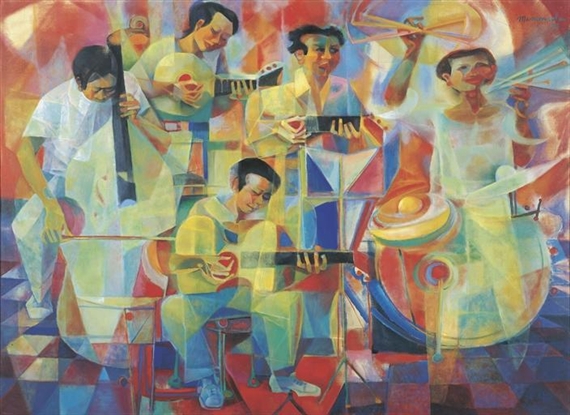

6. “The Musicians” by Vicente Manansala (1973)
Manansala was one of the pioneering abstract artists to emerge from the Philippine art scene. It is also said that Vicente Manansala was responsible for bridging the gap between the metropolis and the suburbs, as well as between rural and cosmopolitan modes of life.
He achieved this by illustrating scenes of contemporary life in the Philippines in an abstract manner. This was a breath of fresh air in the countries traditional art scene.
His artwork references the arrival of American culture by depicting a nation amid change. Manansala masterfully utilises the cubist form, while still respecting the true to life form of the subjects he was painting.
This gives his painting a visually appealing feel. The bright colours and geometric shapes bring life to the academic style of painting common in the Philippines at the time.
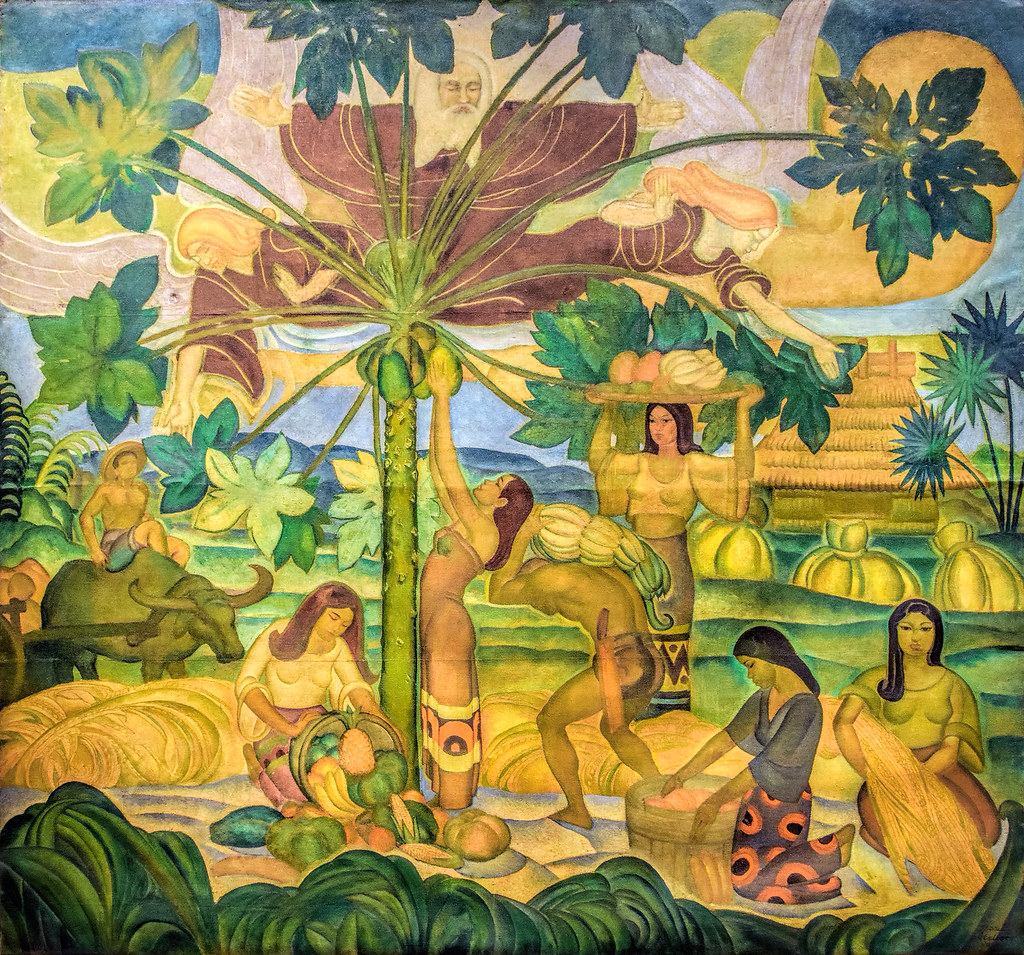

7. “Mother Natures Bounty Harvest” by Victorio Edades (1935)
According to historical accounts, Victorio Edades is considered the “father” of modern Philippine art. After completing his education in the United States, he returned home and immediately began developing an innovative approach to the study of art.
His piece “Mother Nature’s Bounty Harvest” was actually a collaboration with Carlos “Botong” Francisco and Galo B. Ocampo. The trio became a force, fuelling the growth of mural painting in the Philippines.
The trio began modernising the Philippines with their public murals. At first, the public did not appreciate this new form of modern art. It was a step away from the traditional style of formulaic, academic art found in the country.
Of the many murals painted by the trio, “Mother Nature’s Bounty Harvest” is one of the few to survive. The painting highlights the relationship Filipinos have with the land, and the joy they receive from the abundance of produce nature affords to them.
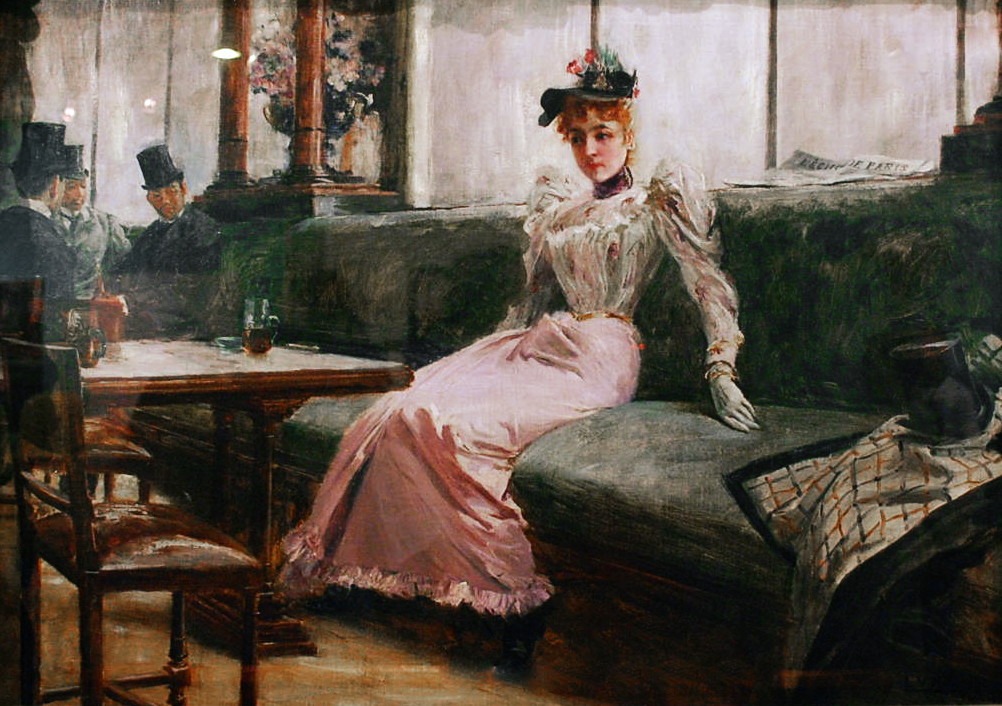

8. “The Parisian Life” by Juan Luna (1892)
This impressionist masterwork of Juan Luna was created during his stay in Paris, France. The painting is known as Interior d’un Cafi which literally translates to “Inside a Café”. In contrast to his prior works, “Parisian Life” avoids the intense and dramatic topics he covered during his life as a revolutionary activist.
The painting portrays a “fleeting moment of regular life” that occurred during the author’s time living in Paris in the 1890s. The central figure is an adult female figure wearing a lavender frock. She radiates a feeling of relaxation as she leans back on a bench with a glass of beer in front of her.
But on closer inspection, you will notice three seated on the left-hand side of the painting.
These men were a depiction of three historical figures of the Philippines. Juan Luna himself, as well as Jose Rizal and Ariston Bautista Lin. This foreshadows Luna’s future movements shortly after completing his “Parisian Life” painting. Luna left Paris for the Philippines, he rejoined Rizal and Bautista there to resume his role in the Philippine revolution against Spanish colonialism.
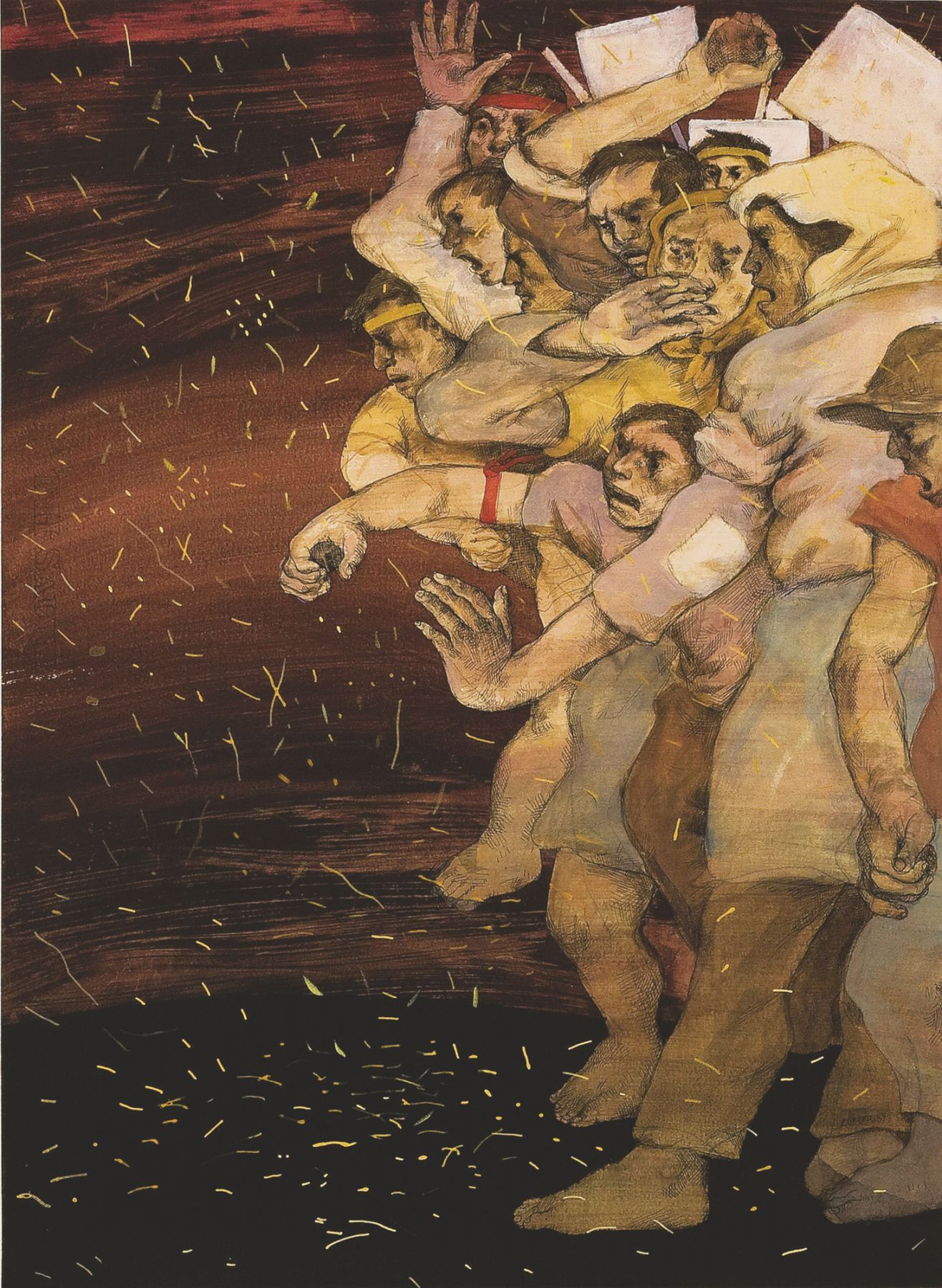

9. “Yellow Confetti” by Benedicto Reyes Cabrera (1984)
The uprising of the everyday FIlipino and the downfall of the dictatorship as a result of the EDSA People Power Revolution in 1986 are two significant events that altered the path of Philippine history
Benedicto Cabrera or BenCab was working amid the uproar. Through his controversial piece of art titled “Yellow Confetti,” he managed to embody the civic resistance of Filipinos at the time.
The painting portrays the anger felt by Filipino protesters at the time, as well as the unity of the common Filipino, uniting together to fight for a common cause.
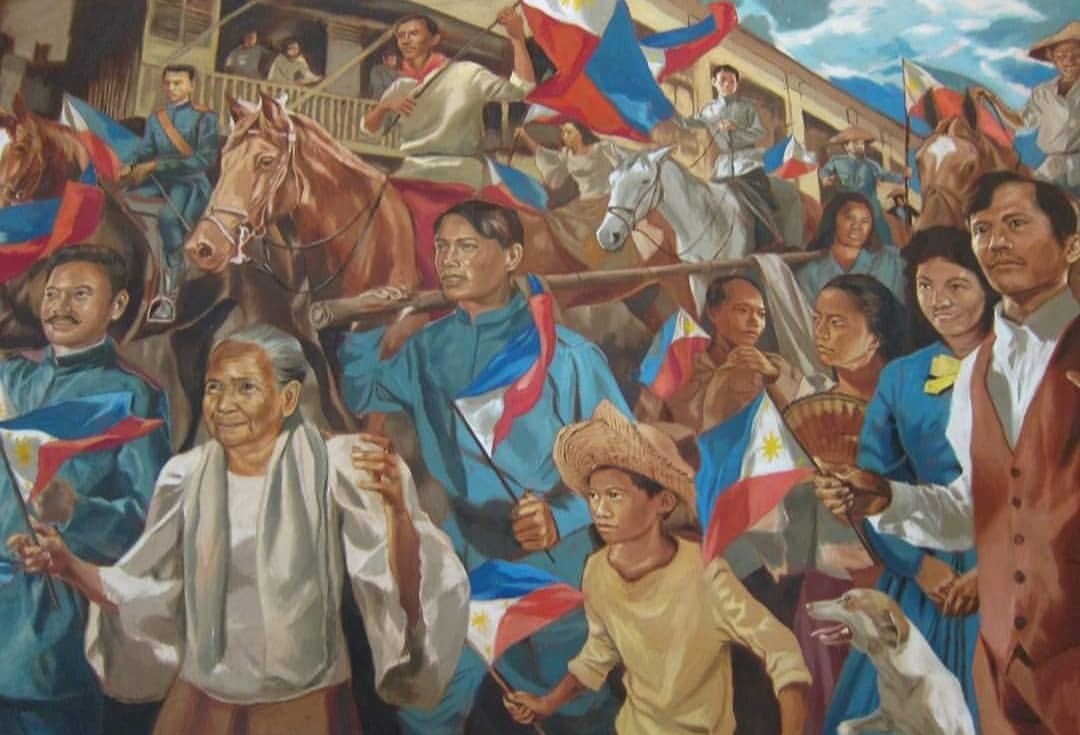

10. “Gathering of Heroes” by Juanito Torres (2017)
Juanito Torres, a modern Filipino artist, is responsible for creating another staple of Philippine art, called “The Gathering of Heroes.”
It is said that the composition of this iconic piece mirrored the structure of an X-Men comic book cover. The painting though, is packed with heroes who have lived and died for the country.
The painting features Andres Bonifacio, Melchora Aquino, Jose Rizal, Antonio Luna, Emilio Jacinto, Emilio Aguinaldo. Many of those figures were instrumental in the Philippine revolutionary movement of the 19th century.


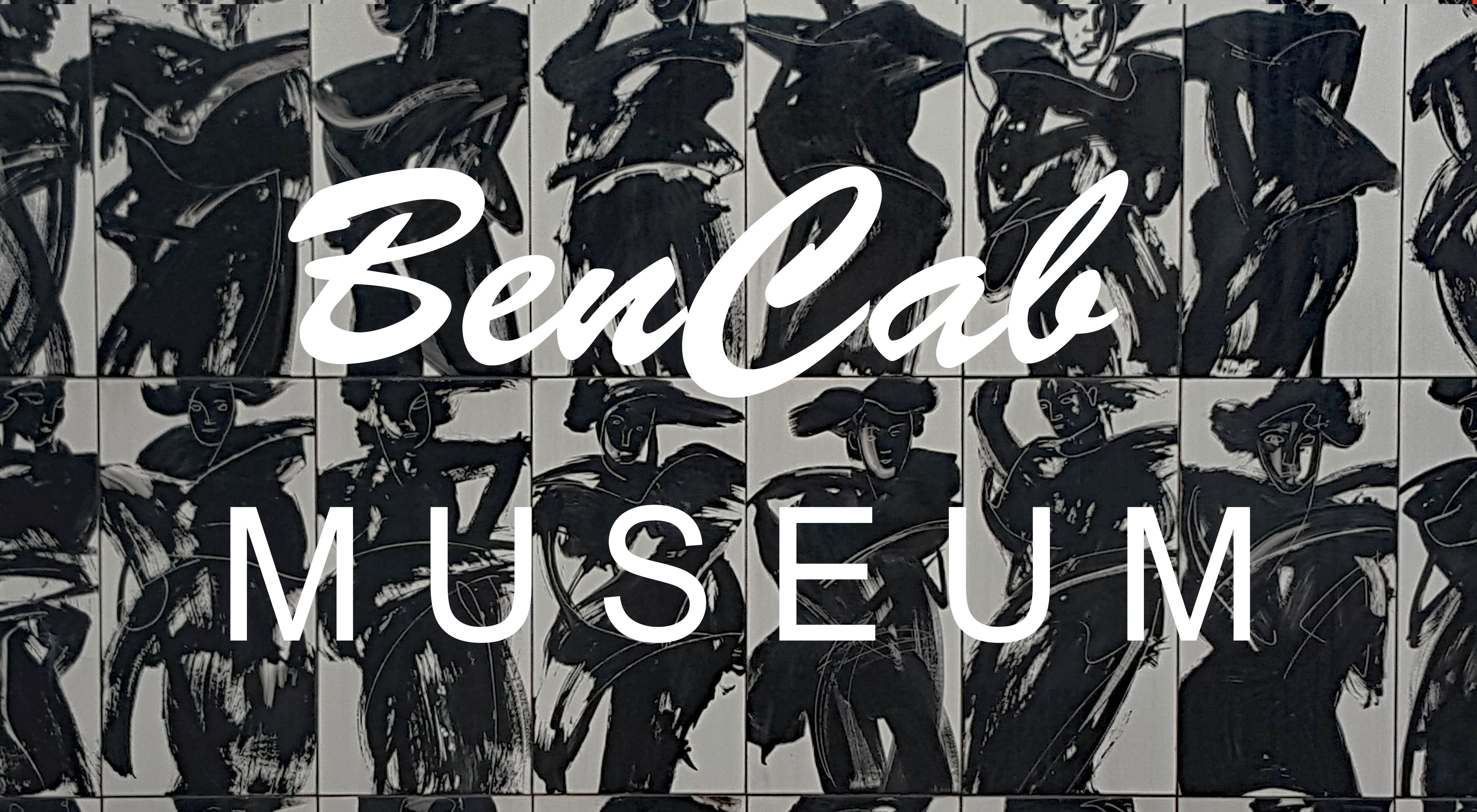
Be the first to comment